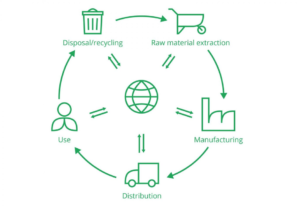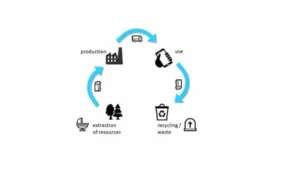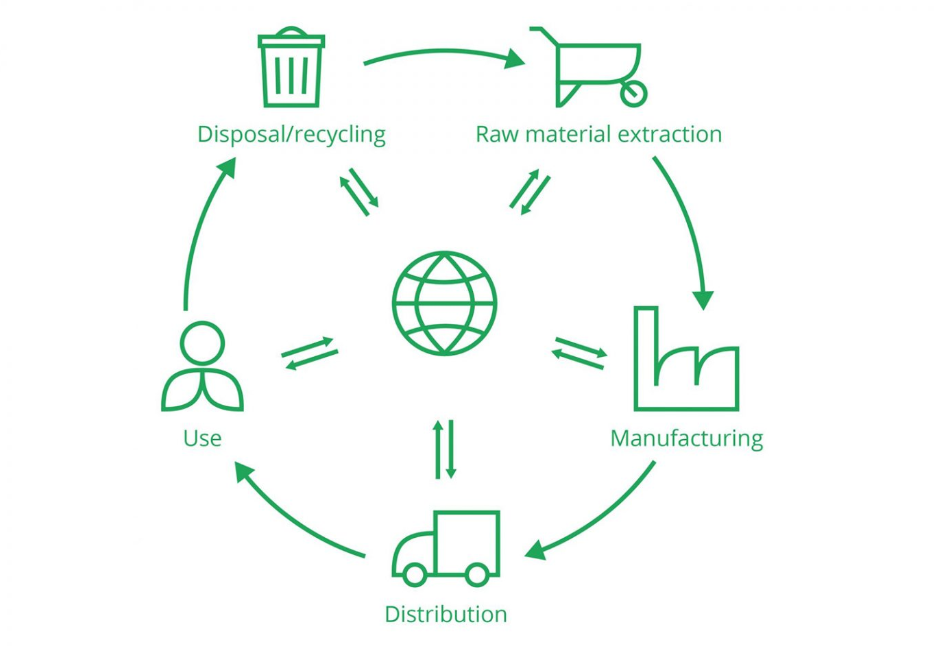“The activist is not the man who says the river is dirty. The activist is the man who cleans up the river.” – Ross Perot
Introduction
Some individuals dedicate their lives to uplifting others, leaving a legacy that inspires generations—Mahatma Gandhi, for instance, whose selfless actions continue to resonate long after his passing. In stark contrast, others live solely for themselves, driven by personal gain and selfish motives. They may be forgotten, or worse, remembered for the harm they caused, as in the case of Adolf Hitler, whose actions serve as a cautionary tale of misguided ambition and destructive intent.
Content: Difference Between C2C and C2G
- What is a C2C and C2G?
- Key Differences between the two
- Why both are important?
- Conclusion
Objective
Life Cycle Assessment (LCA) is a systematic method used to evaluate the environmental impacts of a product, process, or service throughout its entire life cycle. It is a vital tool for understanding and reducing environmental impacts. Cradle to Cradle (C2C) and Cradle to Grave (C2G) are practical methodologies within the circular economy for designing products that align with sustainable development goals.
Once you go through the article, you will understand the meaning of C2C and C2G, the key differences, why both are important and how to interpret them.
Read More: https://bit.ly/LinearCircularEconomy
Definition: ISO 59004: 2024
Circular Economy (Cl 3.1.1): Economic system that uses a systematic approach to maintain a circular flow of resources by recovering, retaining or adding to their value while contributing to sustainable development.
Sustainable Development (Cl 3.1.11): Development that meets the environmental, social economic needs of the present without compromising the ability of the future generations to meet their own needs.
Life Cycle (Cl 3.2.4): Consecutive and interlinked stages in the life of a solution.
Linear Economy (Cl 3.5.10): Economic system where resources typically follow the pattern of extraction, production, use and disposal.
End of Life (Cl 3.5.30): <Product> point in time when a product is taken out of use and its resources are either recovered for processing or disposed of.
Life Cycle Assessment (Cl 3.6.8): Compilation and evaluation of the inputs, outputs and potential environmental impacts of a product system throughout its life cycle.
Read More: https://bit.ly/ReduceRecyleReuse
Detailed Information
The global economy is “linear, ” mainly based on extraction, production, use and disposal. This linear economy leads to resource depletion, biodiversity loss, waste and harmful losses and releases.
 There is an increased understanding that a transition towards an economy that is more circular, based on a circular use of resources, can contribute to meeting current and future human needs (welfare, housing, nutrition, healthcare, mobility, etc.).
There is an increased understanding that a transition towards an economy that is more circular, based on a circular use of resources, can contribute to meeting current and future human needs (welfare, housing, nutrition, healthcare, mobility, etc.).
Sustainability is an essential part of facing current and future global challenges, not only those related to the environment. It’s a holistic approach that considers the social, environmental and economic impacts of actions and decisions taken today.
Read More: https://bit.ly/ClimateChnages
What is Cradle-to-Grave (C2G)
The term “cradle to grave” refers to the entire life cycle of a product, from its creation to its disposal. It is commonly used in environmental science, life cycle assessment (LCA), and product design to describe the linear flow of resources and materials.
 This approach includes:
This approach includes:
- Raw Material Extraction (Cradle): The initial stage where raw materials are sourced.
- Production and Manufacturing: The process of converting raw materials into finished goods.
- Distribution and Use: The transportation and usage of the product by consumers.
- Disposal (Grave): The end-of-life stage where the product is discarded, typically in landfills or through incineration.
Characteristics of Cradle-to-Grave
- Linear System: Resources are used in a one-way flow, from extraction to disposal, often resulting in waste that cannot be reused.
- Finite Resource Consumption: Relies on non-renewable resources, leading to depletion.
- Environmental Impact: Often generates significant waste, pollution, and carbon emissions.
Read More: https://bit.ly/LifeCycleAssesment
Example of C2G
A typical plastic water bottle:
- Cradle: Petroleum is extracted to produce plastic.
- Production: Plastic is moulded into bottles.
- Use: The bottle is used for drinking water.
- Grave: The bottle is discarded, often ending up in a landfill or ocean, contributing to pollution.
Read More: https://bit.ly/17SDGGoals
What is Cradle to Cradle (C2C)
“Cradle to Cradle” (C2C) is a sustainable design philosophy and framework that emphasizes the creation of products and systems where every material and resource is continuously reused in a closed-loop cycle. Unlike the traditional “cradle-to-grave” approach—where materials are ultimately discarded as waste—C2C envisions products that either return safely to nature or are perpetually recycled into new products without losing value or quality.
 This concept was popularized by the book Cradle to Cradle: Remaking the Way We Make Things by William McDonough and Michael Braungart. It advocates for designing products that benefit both humans and the environment, mimicking the regenerative cycles of nature.
This concept was popularized by the book Cradle to Cradle: Remaking the Way We Make Things by William McDonough and Michael Braungart. It advocates for designing products that benefit both humans and the environment, mimicking the regenerative cycles of nature.
Read More: https://bit.ly/CircularEconomyPrinciplesC
Example of C2C
Aluminum Cans
- Cradle: Bauxite is mined and processed into aluminum.
- Production: Aluminum is formed into cans for beverages.
- Use: The can is used to hold and consume drinks.
- Recycling (Continuous Cycle): After use, the aluminum can is collected, melted, and reformed into a new can without degrading its quality. This cycle can repeat indefinitely, preventing waste and conserving resources.
Read More: https://bit.ly/SDGCircularity
Key Difference Between C2C and C2G
The terms “Cradle to Cradle” (C2C) and “Cradle to Grave” (C2G) describe different approaches to the lifecycle of products and their environmental impacts. Here’s a comparison:
| Aspect | C2C | C2G | |||
| Philosophy | Circular, regenerative | Linear, disposable | |||
| Lifecycle | Continuous use or recycling. A closed-loop system, where products are designed with the end in mind. | Ends with disposal, typically in a landfill or through incineration, often resulting in environmental pollution. | |||
| Design Focus |
|
Functional, cost-focused, often with less regard for environmental impact or recyclability. Example: Single-use plastic bottles | |||
| Environmental Impact | Minimal, strives for zero waste. It considers products as part of a regenerative system. Example: biodegradable packaging: Plant-based | High, often polluting, contributing to environmental degradation. Example: ETP sludge | |||
| Economic Model | Supports a circular economy by promoting reuse, remanufacturing, and recycling. Example: modular furniture designed for disassembly and reuse | Linear economy, and resource depletion, follow a “take-make-dispose” model. Example: Tyres | |||
| Certifications | Cradle to Cradle Certified, which assesses safety, sustainability, and circularity. | No specific certification but may comply with general environmental standards or regulations. | |||
Read More: https://bit.ly/3PillersSustainability
Conclusion:
Cradle to Cradle is a more sustainable and forward-thinking approach, aligning with modern efforts to mitigate climate change and reduce waste. Cradle to Grave, while traditional, poses significant environmental challenges.
Read More: https://bit.ly/ISO59000Series
References:
ISO 14040: 2006
ISO 14044: 2006
Industry Experts
This is the 227th article of this Quality Management series. Every weekend, you will find useful information that will make your Management System journey Productive. Please share it with your colleagues too.
In the words of Albert Einstein, “The important thing is never to stop questioning.” I invite you to ask anything about the above subject. Questions and answers are the lifeblood of learning, and we are all learning. I will answer all questions to the best of my ability and promise to keep personal information confidential.
Your genuine feedback and response are extremely valuable. Please suggest topics for the coming weeks.
